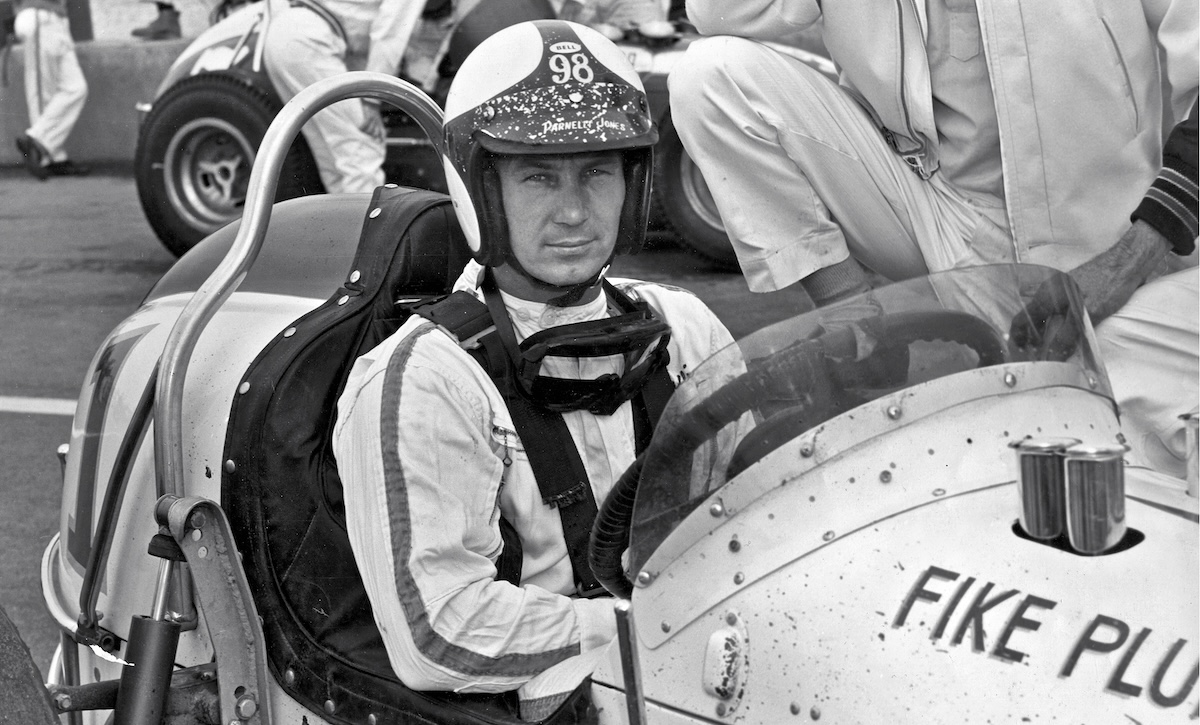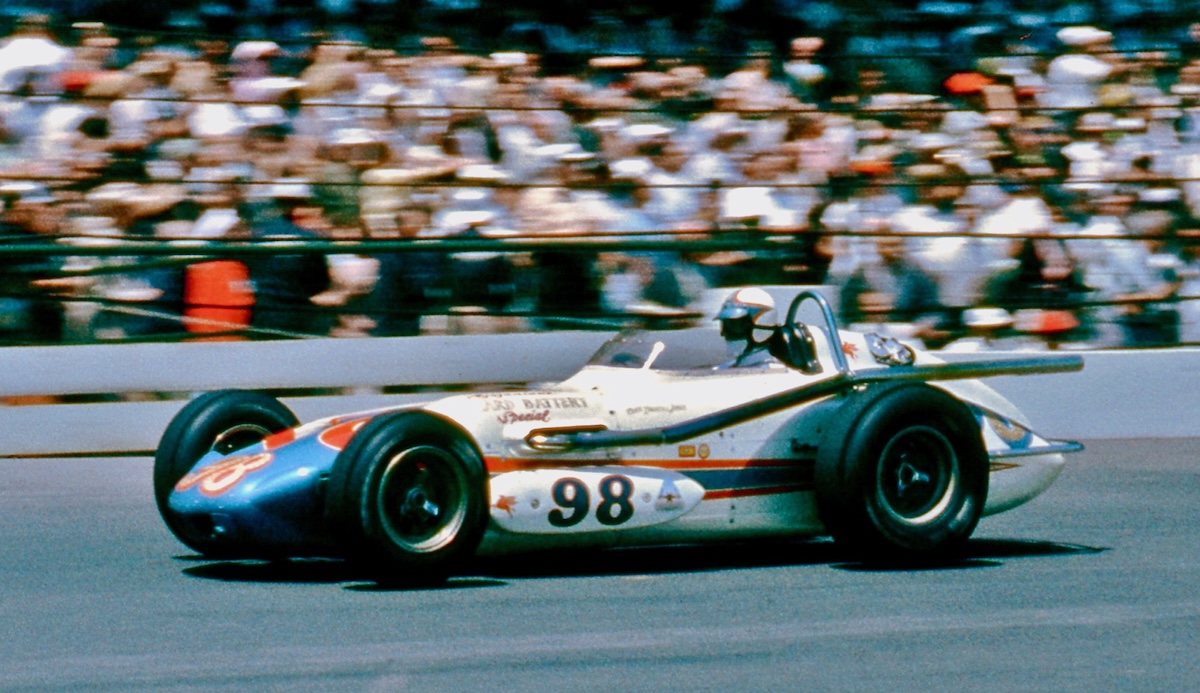One of the toughest, fastest, most determined and most versatile drivers of all time in motorsport has passed away at the age of 90. Rufus Parnell Jones, born in Texarkana, Ark., in 1933, died of natural causes on June 4 in Torrance, California. , the town where he had lived since he was seven years old.
How important was the man we knew as Parnelli Jones? The late Robin Miller said it best: the Mount Rushmore of American motorsports would feature AJ Foyt, Mario Andretti, Dan Gurney and Parnelli. And there is no point in disputing him because he was right.
Parnelli meant speed. Just as over-enthusiastic drivers in the UK in the 1960s were asked by police: “Who do you think you are?” Stirling foam? traffic officers on this side of the Atlantic would therefore compare a speeding driver unfavorably to Parnelli Jones. And inevitably, the fateful day came when the man himself was arrested, and he was able to respond: “Actually, I am Parnelli Jones. This will become the title of his excellent biography with journalist Bones Bourcier.
Yet the “Jones” part became superfluous: he was one of those elite sports stars – Nuvolari, Pelé, Kobe, Shaq, Fangio – who only needed one name for everyone to know the subject of the conversation. There was only one Parnelli.
How he got this unusual (unique?) name is tortuous, but has its roots in a young driver’s frequent desire to fake his age. Jones’ mother had named him Rufus Parnell after a local judge she respected, but the name Rufus Jones would have been rare enough to ring the ears of potential visitors to his local track in Gardena, just five miles from Torrance. So it would have been easy for officials to trace his age and learn that he was 17, a year younger than the legal age to compete. What to do? A high school friend, Billy Calder, found the solution. He nicknamed him “Parnellie”, merging his middle name with the first name of Nellie, a girl who rather liked our handsome hero, and one day Billy painted “Parnellie” on the door of Jones’ 1934 Ford jalopy. final e” was eventually removed; the rest got stuck. Billy couldn’t have imagined that his friend’s memorable new alias would become an iconic name.


Parnelli got his start in local arenas and never lost his enthusiasm or success on the short tracks.
In cars, Jones was a tough guy, racking up around 100 wins across SoCal, and he was more than ready to move up to NASCAR’s Pacific Coast Late Model Series, where he racked up 15 wins. In fact, the West Coast stockmen would ultimately bring him 22 triumphs, and this form brought him to the attention of team owner Vel Miletich in 1956. Together they decided to enter the NASCAR Cup at Darlington Raceway in 1958, and despite starting 44th, Parnelli was successful. lead a few laps before suffering an engine failure.
Switching to IMCA sprint cars for 1959, Jones made an impression finishing fifth in the championship despite missing several rounds in the first half of the season. The aggression required by such powerful single-seaters suited his style, although in truth he could be quick at anything, either taming a car’s mannerisms to follow his will or adapting his actions to suit. of the car. The net result was that he won the USAC Midwest Sprint Car title in 1960, and followed it up with the USAC National title in 1961 and 1962. In fact, he was nothing short of brilliant in the sprint cars, eventually finishing his career with 25 Feature victories to go along with his 25 midget triumphs.
By then he had joined the Indy (Champ) car fray and in his ninth race at the highest level, at the California State Fairgrounds in Sacramento in 1960, he earned a second-place finish. But that was just the gravy: It was his simultaneous Midwest Sprint Car crown that caught the attention of promoter JC Agajanian, who was desperate to put this phenomenon on the Indy grid. Aggie’s judgment and anticipation of greatness proved impeccable.
Only a year earlier, Jim Hurtubise had – as a rookie – set the new benchmark on a lap of the Brickyard, 149.601 mph during a four-lap qualifying race that made him the fastest in the field. (Unfortunately, he had achieved this goal on the fourth day of time trials, so his race only made him eligible for 23rd place on the grid.) “Herk” then used this platform as a Jean -Latter-day Baptist, warning anyone who would listen. an even faster driver would soon be among them, namely his sprint car rival Parnelli Jones. Hurtubise, like Agajanian, was right: PJ became the man to beat at IMS.
In his 1961 Indy 500 debut with the Agajanian Willard Battery Watson-Offy, Jones qualified fifth and led 27 laps (figures exactly matched by Fernando Alonso in his debut some 56 years later, d ‘elsewhere), but he lost a cylinder in the second. halfway through the race, and a piece of metal hit him above the left eye. Blood then flowed from the cut and filled his left glasses, so that he had to empty them every few rounds. He nevertheless held on, crossing the finish line in 12th position. He had done (more than) enough to earn Rookie of the Year honors, albeit shared with Bobby Marshman. There would soon be a second place at the fearsome Langhorne, a fifth at Syracuse, another second place at Sacramento and finally a decisive victory at Phoenix.
The following year promised much, and a second place finish at Trenton to open the Champ Car 62 season seemed like just a warm-up. In May, Jones posted a lap of 150.729 mph, an Indy single-lap record, and when his four laps produced an average of 150.370, he not only held a record, he also held the pole – 1 mph faster than even former winner Rodger Ward. However, after leading laps 1-59 and 65-125, Jones then lost his brakes, making his pit stops a nightmare of brawling and shuffling, so he would eventually come home seventh in frustration.
Elsewhere on the IndyCar course, Jones was always a force to be reckoned with and finished second at Milwaukee, Langhorne and Springfield, third in Langhorne’s second race, top five at Trenton, Sacramento and Phoenix and victory at the State Fairground from Indianapolis. gave him third place in the championship.


After showing what he could do with a little less bad luck in his first two years in Indy, Jones and Ol’ Calhoun got the job done in 1963.
Thanks to a bad dose of retirements, in 1963 he slipped to fourth place in points, but it almost didn’t matter: he won Indy. After starting again from pole position, this time alongside his pal Hurtubise and another great, Don Branson, Jones led 167 laps but found, in terms of race pace, that his closest opponent came from the Rear-engined Lotus rookie from Indy but from Formula 1 reference Jimmy Clark. As became Indy legend, Ol’ Calhoun’s car began losing oil – no worse than the others, his defenders insisted – because of a crack in the tank, and by the time Lotus founder Colin Chapman had alerted the authorities, the car’s oil level had fallen below the fracture. Thus, no black flag was deemed necessary, and Clark returned home half a minute late. The one who spun and crashed with oil was Eddie Sachs and, assuming it was Jones’ fault, he confronted him at the post-race banquet… where he got a bunch of punches for his troubles. Clark, on the other hand, remained silent, congratulated his rival, smiled charmingly and vowed to return.